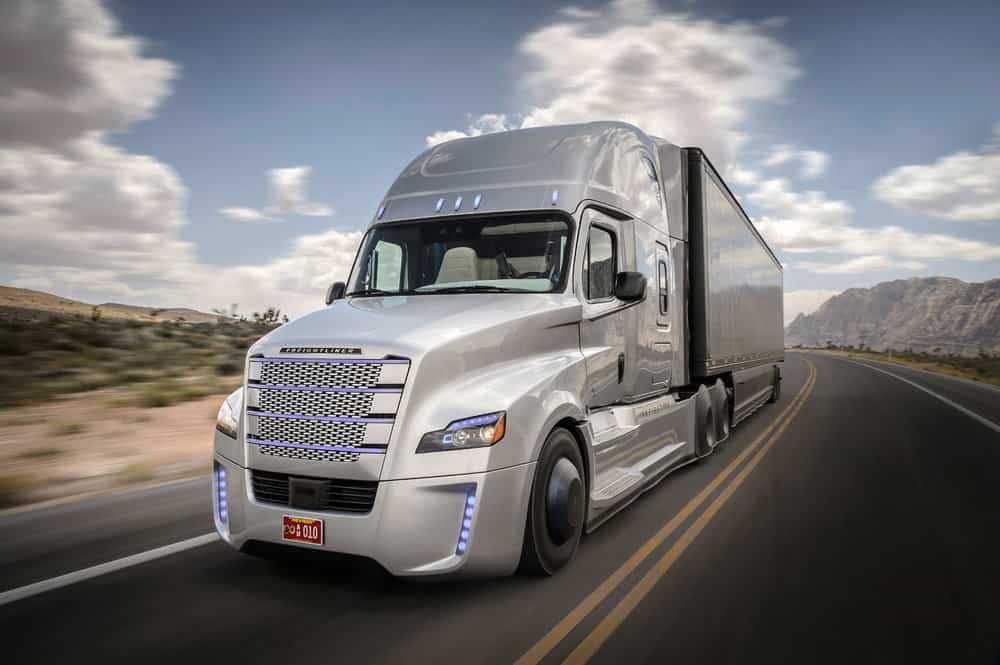
Autonomous vehicles; when are they coming and whose jobs will they displace? That’s all anyone wants to know. Reports state that millions of jobs will be disrupted, including truck drivers, who will no longer be needed.
Several experts have been trying to slow the autonomous vehicle train down a bit, and one, Tom Dingus, the director of the Virginia Tech Transportation Institute, used a historical timeline to provide a potential outlook for that day when freight and people will move on the nation’s roadways guided by computers.
“By 2035, half of the cars on the road will be substantially automated,” he said during a recent TedX talk. “To get to the 90% point, you have to go out to 2049, so that’s really a long time from now. And I can’t emphasize this enough, if we don’t it right, you can add 5 to 10 years to those numbers.”
As someone who has spent much of his life studying automotive technologies, Dingus added some perspective on the mass hysteria, if you will, of autonomous technologies.
“What we all believe is a revolution, from the media to partnerships being created every day,” is not, he says. “And amazing things happening. But from my humble view, it’s really an evolution because we’ve been doing this for so long.”
In the presentation, Dingus took the audience back through some examples of innovative technologies and their path to widespread acceptance.
“It takes a great deal of time for things to get deployed,” Dingus observed. “We started testing automated braking 20 years ago and it was only implemented in the U.S. in 2013.”
The Institute for Highway Safety predicts that only half of all cars will have the technology by 2026. To follow a similar timeline with autonomous vehicles would place about 50% of vehicles with “substantial automation within 13 years after it’s nearly perfect, and 90% in 27 years,” Dingus said.
The “nearly perfect” standard is important, he added, as people’s perception of technology and reality of technology differs.
“There’s a lot of advocates who say [autonomous technology] is already there, that we’re killing 37,000 plus people a year on our roadways so we need to get this out as soon as possible,” Dingus said. “Those are really good points that need to be considered. But it really needs to be nearly perfect because you are not going to get into a robotic taxi if 15,000 people are being killed by robotic taxis.
“People are sometimes really terrible about judging actual risk,” he added. “Examples include commercial airline safety, where there is a real fear of ceding control over a situation. Most people realize that flying commercial is safer than driving a car. If you did a survey today, they would say it’s twice as safe, but if you look at reality, fatalities over a number of years, it’s really 2,000 times as safe. So, the perception of the risk is drastically different from the actual risk.
“For whatever reason, manual driving gets a bye when it comes to risk and we literally kill 100 people every day on our roadways, but people don’t view it as a risk,” he continued. “If you compare that to shark attacks, someone gets killed by a shark off the coast of North Carolina, it’s a tragic event, it’s in the mainstream media for days and people get off the beaches. We kill more people in cars everyday than sharks have killed people in the U.S. in the last 200 years. That’s the difference in risk perception.”
The reality is that 94% of all people killed in vehicle crashes are the result of human error. Dingus cited statistics that show that the average driver has a serious (police reported) crash every 17 years. Very safe drivers, those who follow all laws including speed limits, may never have a serious crash. For an autonomous vehicle to meet that record, it would have to have 0 crashes.
And as long as there are human drivers on the road, that is not likely.
“There are very few things in the transportation world that are 100%,” Dingus said. “Manual driving is also a problem from AVs. People speed, for instance, and it’s very hard for autonomous vehicles to be able to predict all this human behavior.”
While there are some autonomous technologies available today – Dingus said there are currently 5 production cars with the technology installed – it will be some time before we see any widespread deployment of autonomous vehicles. And that should be good news for the truck drivers of tomorrow.
Stay up-to-date with the latest commentary and insights on FreightTech and the impact to the markets by subscribing.










